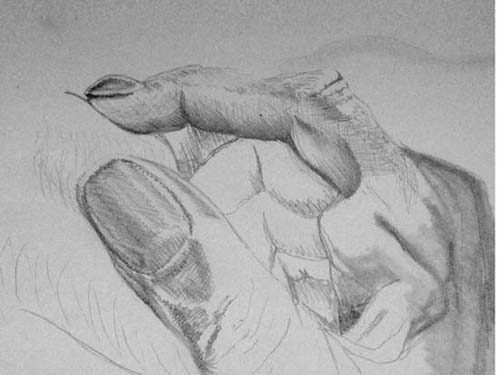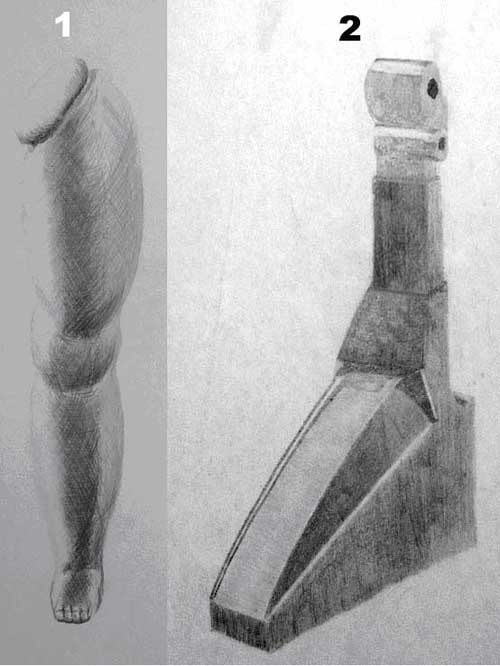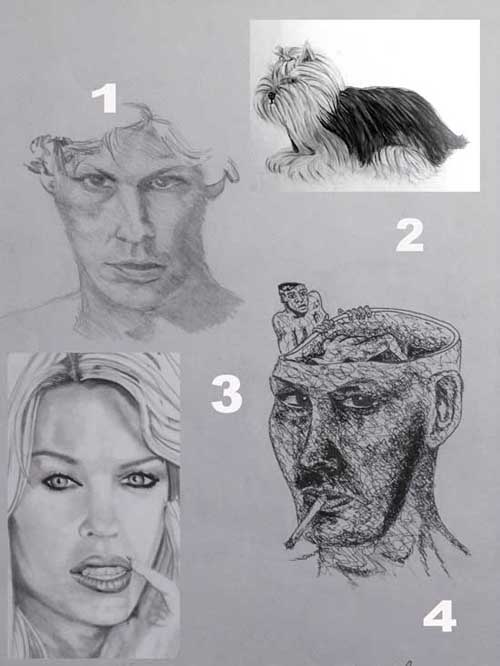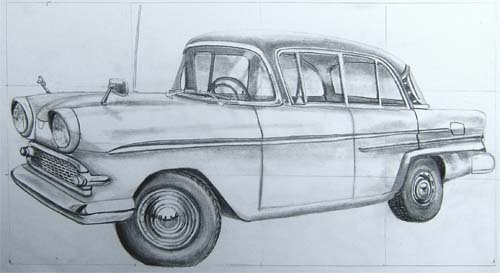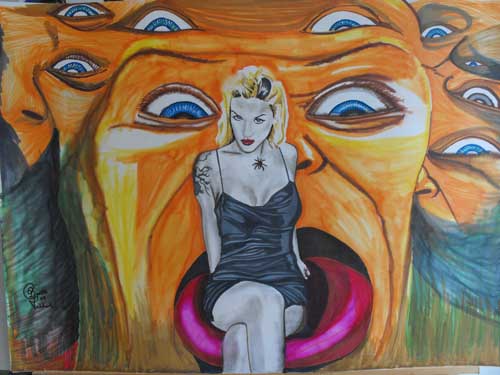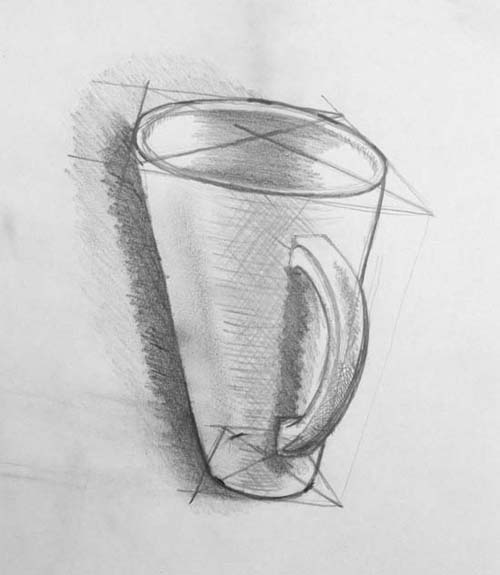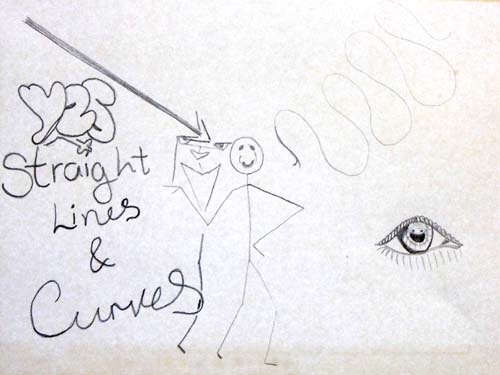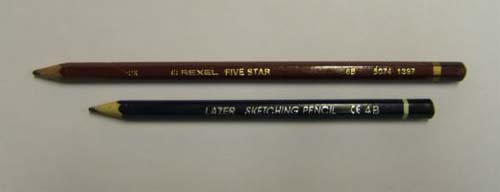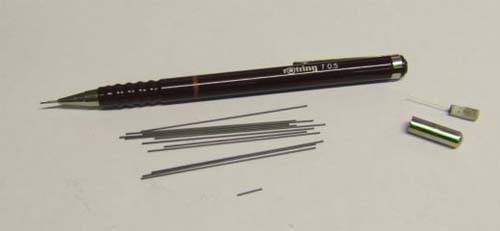Hatching, cross hatching and tonal modeling basics, will help you understand shading techniques, this understanding I am going present will further enable you to develop your drawing skills, by using these simple methods.
A very basic explanation of tonal modeling is as follows.
If you draw on a piece of paper with a soft, 3B or 6B graphite pencil and make a dark line by pressing hard, then rub over the top of the pencil line, with your finger or with a piece of paper under your finger, you will see that line you made has now been smudged. Now the line that you made, will not be as well defined with the edges of it being softer and less definite or hard. This is known as a tonal modeling technique, one method of creating this tonal modeling technique is by smudging the pencil marks used for shading, to help create a more realistic three dimensional form. This is not the only way to do your tonal modeling or shading, as it can also be achieved by rubbing the pencil lightly over the paper to create a soft blended tone also.
There is also another shading method called hatching and cross hatching as well that we will explain a little later in this article.
Tonal modeling is when the pencil marks are modeled or smudged, so instead of them having hard edges, they have soft blended edges, this smudging can be done using your fingers, a paper stump, soft tissue or cotton wool. Using your fingers is not recommended because of the oils from your skin, that contain acids being left on the paper, these oils with time can cause discoloring and rotting of the paper, ruining the finished drawing, over a period of time.
When a sculptor models with clay, he creates the shape and form of the sculpture by modeling the clay with his hands, tonal modeling is when you model the pencil marks to create soft blended tones of graduated shading with a pencil, charcoal, pastel or paint, it is a process of blending tones or colors, so there is a soft graduated transition from one tone or color to another.
Tonal modeling in a drawing or painting context, is when the pencil, charcoal, pastel or paints are blended to create soft shadows, to produce the form and shape of the object, being drawn on a 2 dimensional surface creating the illusion, of a 3 dimensional form or shape.
The blending of the drawing materials, into graduated tones to create the illusion of a 3 dimensional form or shape, on a 2 dimensional drawing surface is what’s usually referred to as tonal modeling.
Below you will find an image of two pencil drawings.
1. This first image has been drawn with a 5B graphite pencil, using a hatching and cross hatching method.
2. This other second image, has been drawn with a 5B graphite pencil, using a tonal modeling method.
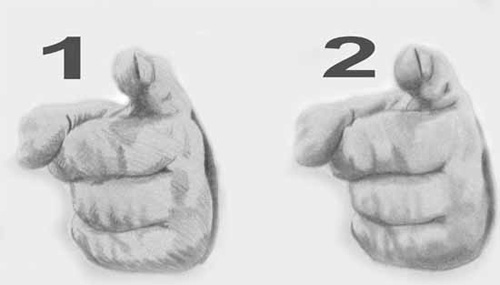
Both depict the shape and form of the image but the second example, is modeled, using the tonal modeling method, notice that the shadows and tones are soft, with few hard edges, unlike the first cross hatching example, with many hard edges/lines.
Essentially there are hatch marks and smudge marks, with both these types of marks having attributes, also associated with the use of charcoal, that enable you to learn to understand tonal variation better.
• Both types of marks are good and effective in their own right, as well as when used together.
• Both make excellent drawings, in their own right and when mixed.
• Both can have specific, common and preferred uses.
• Both are also used when painting.
• Both can be used effectively, with other types of drawing tools, especially the hatching marks.
Modern mark making revealed again.
Crosshatching and tonal modelling.
The above is a combination of hatching, cross hatching, line drawing and tonal modelling with only a HB pencil being used to do this.
Crosshatching and tonal modelling.
- Cross hatching style drawing, of a dolls leg but although very messy looking in the detail, it is a fine example of how, even soft flowing shapes can be created with crosshatching.
- Tonal modelling or blended style, with very hard edges, although you can see some of the hatching marks showing through as well.
Hatching and tonal modelling revisited.
- Example of a loose tonal modelling or blending style drawing, of a face that is really somewhere between, hatching and tonal modelling because of the even marks, slanting downward to the right.
- A Yorkshire terrier dog, which happily lends it’s self well to this loose but flowing hatching technique, which is highly appropriate for drawing fur or hair, as can be seen a little in image 3 as well.
- A soft blending of tones creates this portrait, this is mostly achieved by smudging the graphite pencil marks, with a paper torchon or drawing stump, this is just a hard paper pencil type tool, that can be used to smudge the pencil marks.
- Although some like to call this a squiggle or squrkle technique, it is actually just another form of cross hatching, this image has been drawn with a permanent ink pen.
View Gareth Pritchard’s profile on G+

